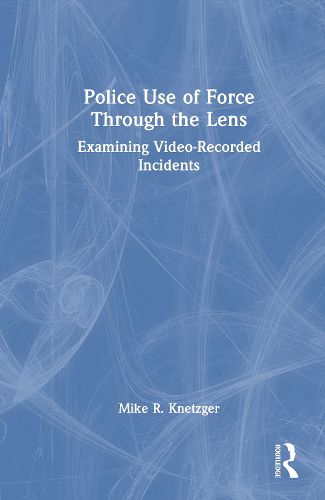Readings Newsletter
Become a Readings Member to make your shopping experience even easier.
Sign in or sign up for free!
You’re not far away from qualifying for FREE standard shipping within Australia
You’ve qualified for FREE standard shipping within Australia
The cart is loading…






Police Use of Force Through the Lens provides a comprehensive look at video-recorded use-of-force incidents and how video influences perceptions about the appropriateness of the force used. No other book on the market takes a historical, critical, and contemporary look at how video footage from dash cameras, body-worn cameras, surveillance cameras, or handheld cameras influence how people perceive the appropriateness of force used by law enforcement officers, correctional officers, and security officers.
Supported with academic sources along with practical examples that connect academics to the real world, the book educates readers about the history of cameras in law enforcement, significant events that influenced the proliferation of cameras in law enforcement, how use-of-force incidents are evaluated, how camera factors influence perceptions, and how human factors can impact how officers perceive and recall what occurred during use-of-force incidents.
A thorough discussion of the benefits and disadvantages of cameras-including how camera perspectives can be misleading and incomplete-challenges the presumption of the objectiveness of video and posits a systematic framework to help evaluators or viewers of video-recorded use-of-force incidents arrive at more objective conclusions.
$9.00 standard shipping within Australia
FREE standard shipping within Australia for orders over $100.00
Express & International shipping calculated at checkout
Police Use of Force Through the Lens provides a comprehensive look at video-recorded use-of-force incidents and how video influences perceptions about the appropriateness of the force used. No other book on the market takes a historical, critical, and contemporary look at how video footage from dash cameras, body-worn cameras, surveillance cameras, or handheld cameras influence how people perceive the appropriateness of force used by law enforcement officers, correctional officers, and security officers.
Supported with academic sources along with practical examples that connect academics to the real world, the book educates readers about the history of cameras in law enforcement, significant events that influenced the proliferation of cameras in law enforcement, how use-of-force incidents are evaluated, how camera factors influence perceptions, and how human factors can impact how officers perceive and recall what occurred during use-of-force incidents.
A thorough discussion of the benefits and disadvantages of cameras-including how camera perspectives can be misleading and incomplete-challenges the presumption of the objectiveness of video and posits a systematic framework to help evaluators or viewers of video-recorded use-of-force incidents arrive at more objective conclusions.